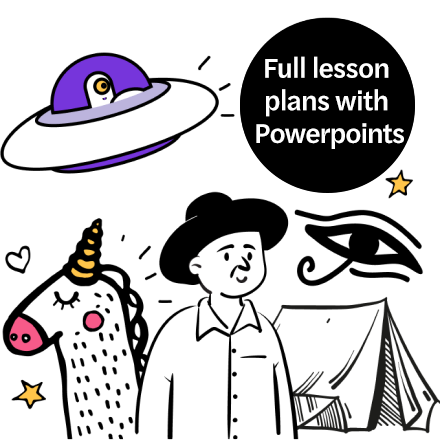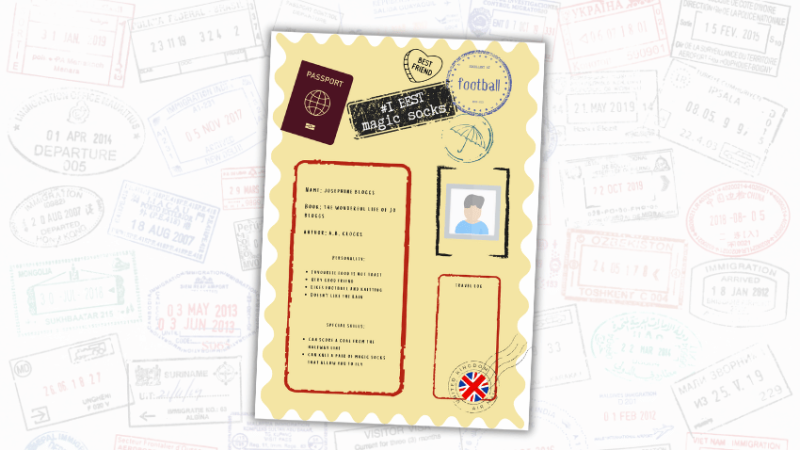Use Metacognition To Help Children Understand How Great Writers Work

If we can guide children with the right questions, they’ll soon learn to navigate the pathways of deeper thought for themselves, says Michael Walsh…

A lesson in which there’s no writing might not seem the best way to develop children’s English skills, but whatever we write must first be rehearsed in the mind and shaped through speech. It makes sense, then, that if we want to see an improvement in what’s written on the page, we should start by sharpening children’s minds – their ability to think and reason – and not just their pencils.
Let’s Think in English (LTE) is a structured teaching programme to help pupils develop their reasoning skills in English. It draws upon research by Piaget and Vygotsky that suggests young people learn best when exploring ideas together, and can be traced back to the Cognitive Acceleration techniques first developed at King’s College London in the 80s.
By helping to improve children’s thinking processes, the project hopes to raise their intelligence; in KS2, lessons stimulate the deeper reasoning patterns that underpin a better grasp of English – in other words, understanding how the writer uses techniques such as narrative structure, figurative language, symbolism and genre to influence the reader.
Take, for example, the LTE lesson based on the Charles Causley poem ‘What has happened to Lulu?’.
What has happened to Lulu, mother? What has happened to Lu? There’s nothing in her bed but an old rag-doll And by its side a shoe.
Why is her window wide, mother, The curtain flapping free, And only a circle on the dusty shelf Where her money-box used to be?
Why do you turn your head, mother, And why do tear drops fall? And why do you crumple that note on the fire And say it is nothing at all?
I woke to voices late last night, I heard an engine roar. Why do you tell me the things I heard Were a dream and nothing more?
I heard somebody cry, mother, In anger or in pain, But now I ask you why, mother, You say it was a gust of rain.
Why do you wander about as though You don’t know what to do? What has happened to Lulu, mother? What has happened to Lu?
Children are asked to reason what the poet’s intentions might be, and why we feel the way we do about the poem. Though Causley makes nothing explicit, there are plenty of clues to follow and, as in all LTE lessons – which are designed to be taught fortnightly – pupils explore the central theme through a five-stage process.
1. Concrete preparation: start digging
The lesson begins with a reading of the text before a question is posed that encourages pupils to re-read and develop their understanding of the poem. In this instance, Causley has already provided the question for us: ‘What has happened to Lulu?’
In groups, pupils explore the question developing their understanding while becoming aware of alternative readings – we’re careful to ask conceptual questions where more than one response is possible. The most common interpretations are that Lulu has either run away or has been kidnapped.
Conceptual questions have advantages – for starters, children can clarify and develop their ideas just by putting them into words. Hearing different thought processes and viewpoints is also beneficial as this presents pupils with a number of choices, namely to accept, develop or challenge a new reading. When pupils decide to challenge, they delve deeper into the text, seeking support for their opinions. When they build on ideas, they develop a richer reading than any individual could attain by him or herself. And when they adopt a new reading, they develop flexibility of thought.
Following the group discussion, the teacher acts as a mediator, developing whole-class readings and reasoning through thoughtful questioning.
2. Social construction: put your heads together
In LTE, we’re interested in both the range and depth of ideas. Once children begin to discuss the poem, they realise there are a number of unanswered questions, such as ‘What age might Lulu be? And does this matter to our reading of the poem?’
Once again, different readings emerge as pupils work in groups. I’ve often heard a pupil cry out in excitement that Lulu must be a child as she owns a rag doll. On his own, this child might not develop his reasoning, but in a group, another pupil is sure to point out that it’s an ‘old rag doll’ and so initiate further discussion.
Many pupils feel Lulu’s age is irrelevant to the poem as this does not change the plot, but we can challenge this view with suggestions that our empathy and emotional response to the poem depends on how old we believe Lulu to be. Thus pupils start to become aware of how they can feel differently according to how they choose to read and interpret the poem. Again, the teacher’s role is to guide the subsequent whole-class discussion.
3. Cognitive conflict: spring a surprise
We now ask a question that students find puzzling, unexpected or discordant with their previous experiences or understanding. Vygotsky believed instruction “marches ahead of development and leads it” and thus we should teach children at the limits of their Zone of Proximal Development (the level at which they can initially perform only with help from their teacher and peers). In this instance, conflict arises when the class is posed a question they are unlikely to ask themselves – why did Causley create the poem as a series of questions? Groups often come up with some thoughtful responses, understanding that the poet may want to build suspense and interest, place us in the role of the speaker, make the poem sound child-like, or fashion a detective story. They’re moving towards a consideration of Causley’s intention and the writer’s craft.
The teacher once more acts as a mediator, directing the whole-class discussion and assisting the groups to develop their ideas through the use of exploratory questions.
4. Metacognition: how did we do?
At the end of a lesson it’s common for pupils to be asked what they have learnt, but in LTE we’re interested in how they have learnt. We usually ask two questions: one focused on the text studied and another asking pupils to reflect upon their thinking.
In this instance, we explain Causley did not write for a particular audience and ask children to consider for whom they think the poem is written. The teacher will also encourage pupils to reflect on how they approached the questions and problems posed; as this is often the first LTE lesson taught, it may involve reflections on how successful their group was in the development of ideas.
5. Bridging: make allround improvements
There is no writing in LTE lessons as, if introduced too early, this can inhibit thought, and pupils are less likely to change or build upon ideas once they’ve committed them to paper. However, subsequent bridging enables teachers to set writing tasks, e.g. create the letter Lulu sent to the mother.
Teachers report children’s writing improves after LTE lessons as the sustained talk acts as a drafting tool. As pupils develop their understanding of the reasoning patterns that underpin the lessons, over time, they start to deploy these within their writing.
LTE lessons can also lead to opportunities to develop reasoning in other contexts and subjects. Many teachers involved in the project create metacognition walls where pupils record their reflections. When faced with problems, children are encouraged to look back on these notes for assistance and, over time, these strategies become internalised.
Let’s Think in English (letsthinkinenglish. org) offers training for schools on how to encourage high-order thinking and how to get the best out of the lessons. There are also opportunities to review teaching and learning.
Michael Walsh (michael.walsh@letsthink.org.uk) has jointly developed Let’s Think in English with Laurie Smith, a research associate at King’s College London. Michael leads on KS2 while both are responsible for KS3 and GCSE.








